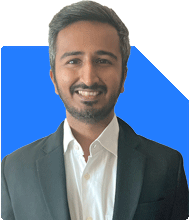Ramalingam Kalirajan |10881 Answers |Ask -Follow
Mutual Funds, Financial Planning Expert - Answered on Jul 08, 2024
He has an MBA in finance from the University of Madras and is a certified financial planner.
He is the director and chief financial planner at Holistic Investment, a Chennai-based firm that offers financial planning and wealth management advice.... more

Hello Sir, I work in a corporate. I have done fd and its interest is taxable hence wanted to check with you how beneficial SIP(mutual fund) would be? If yes how long can I proceed keeping in my mind, need to save money for my 2 month old son’s education
Understanding Your Financial Goals
First, let's set clear goals. You want to save for your son’s education, which means you have a long-term horizon. This is perfect for SIPs in mutual funds as they can offer significant growth over time.
Analyzing FDs vs. Mutual Funds
Fixed Deposits (FDs)
Advantages:
Safety: FDs are low risk with guaranteed returns.
Fixed Returns: You know how much you’ll earn at the end of the term.
Disadvantages:
Taxable Interest: The interest earned is taxable, which reduces your net returns.
Lower Returns: Over long periods, FDs usually offer lower returns compared to mutual funds.
Systematic Investment Plans (SIPs) in Mutual Funds
Advantages:
Power of Compounding: SIPs benefit from compounding, where your earnings generate more earnings over time.
Flexibility: You can start with small amounts and increase your investment as your income grows.
Diversification: Mutual funds invest in a mix of stocks, bonds, and other securities, spreading risk.
Tax Efficiency: Equity mutual funds held for over a year are taxed at a lower rate.
Disadvantages:
Market Risk: Mutual funds are subject to market fluctuations, which can affect returns in the short term.
How SIPs Work
A Systematic Investment Plan allows you to invest a fixed amount regularly in a mutual fund scheme. It’s like a recurring deposit but with potentially higher returns.
Regular Investments: You invest a fixed amount every month, regardless of market conditions.
Rupee Cost Averaging: You buy more units when prices are low and fewer when prices are high, averaging your purchase cost over time.
Compounding: Your investments grow over time as the returns are reinvested.
Categories of Mutual Funds
Equity Funds
These funds invest in stocks and have the potential for high returns. They are ideal for long-term goals like your son’s education.
Advantages:
High Returns: Can offer significant growth over long periods.
Tax Benefits: Long-term capital gains are taxed at a lower rate.
Debt Funds
These funds invest in bonds and are less risky than equity funds. They provide stable returns and are good for short to medium-term goals.
Advantages:
Stable Returns: Less volatile than equity funds.
Tax Efficiency: Long-term capital gains tax benefits if held for over three years.
Hybrid Funds
These funds invest in a mix of equity and debt, balancing risk and return. They are suitable if you want a balanced approach.
Advantages:
Balanced Risk: Mix of high-return equity and stable-return debt.
Flexibility: Adjusts based on market conditions.
Investing for Your Son’s Education
Start Early: The sooner you start, the more time your investments have to grow. Compounding works best over long periods.
Determine the Amount: Estimate the future cost of education and calculate how much you need to save monthly.
Choose the Right Funds: Select a mix of equity and hybrid funds to balance growth and stability.
Stay Consistent: Invest regularly through SIPs and avoid the temptation to stop during market downturns.
Power of Compounding
Compounding is when your investment earnings generate their own earnings. Here’s why it’s powerful:
Reinvestment: Earnings are reinvested, generating more returns.
Time Factor: The longer you invest, the greater the impact of compounding.
Tax Efficiency
Mutual funds, especially equity funds, offer tax benefits that can enhance your returns. Here’s how:
Equity Funds: Long-term capital gains (holding period over 1 year) are taxed at 10% above Rs. 1 lakh, which is lower than FD interest rates.
Debt Funds: Long-term capital gains (holding period over 3 years) are taxed at 20% after indexation, which adjusts for inflation.
SIPs vs. Direct Funds
Direct Funds
Direct mutual funds have lower expense ratios as they don’t involve intermediaries. But they require more effort in terms of research and management.
Disadvantages:
Research: Requires more effort to select and manage.
Time-Consuming: Needs continuous monitoring and adjustments.
Regular Funds through CFP
Investing through a Certified Financial Planner (CFP) has its advantages:
Expert Advice: Professional guidance on fund selection and portfolio management.
Convenience: Less time-consuming and easier to manage.
Building a Portfolio
Diversification: Spread your investments across different types of mutual funds to reduce risk.
Risk Assessment: Understand your risk tolerance and choose funds accordingly.
Review and Adjust: Regularly review your portfolio and make adjustments based on performance and goals.
Emergency Fund
Before investing, ensure you have an emergency fund. This should cover 6-12 months of expenses and be kept in liquid funds or a high-interest savings account.
Financial Protection
Ensure you have adequate insurance coverage to protect your family’s future:
Health Insurance: Comprehensive coverage for yourself and your family.
Term Insurance: Adequate life cover to secure your family's financial future.
Continuous Learning
Stay updated with financial news and market trends. Continuous learning will help you make informed decisions.
Reading: Follow financial news, read books, and stay informed.
Courses: Consider online courses on investment strategies and financial planning.
Regular Review
Financial planning is an ongoing process. Regularly review your investments and adjust based on your goals and market conditions.
Annual Review: Reassess your portfolio annually.
Rebalancing: Adjust your investments based on performance.
Goal Tracking: Ensure you’re on track to meet your financial goals.
Final Insights
By strategically managing your investments, you can achieve your goal of saving for your son’s education and securing your financial future.
Start Early: Begin investing as soon as possible to maximize the benefits of compounding.
Diversify: Ensure your portfolio is well-diversified across different types of mutual funds.
SIP: Use SIPs for regular and disciplined investing.
Tax Efficiency: Take advantage of the tax benefits offered by mutual funds.
Expert Guidance: Consider seeking advice from a Certified Financial Planner for better fund selection and management.
Emergency Fund: Maintain an emergency fund to handle unexpected expenses.
Insurance: Ensure adequate health and life insurance coverage.
Continuous Learning: Stay informed and continuously learn about financial markets.
Regular Review: Regularly review and adjust your financial plan.
By following these steps, you can effectively save for your son’s education and ensure a secure financial future for your family.
Best Regards,
K. Ramalingam, MBA, CFP,
Chief Financial Planner,
www.holisticinvestment.in
You may like to see similar questions and answers below
Omkeshwar Singh | Answer |Ask -Follow
Head, Rank MF - Answered on Dec 09, 2021
Ramalingam Kalirajan |10881 Answers |Ask -Follow
Mutual Funds, Financial Planning Expert - Answered on Apr 08, 2024
Ramalingam Kalirajan |10881 Answers |Ask -Follow
Mutual Funds, Financial Planning Expert - Answered on Apr 17, 2024
Vivek Lala |323 Answers |Ask -Follow
Tax, MF Expert - Answered on Jun 20, 2024
Ramalingam Kalirajan |10881 Answers |Ask -Follow
Mutual Funds, Financial Planning Expert - Answered on Jul 08, 2025
Dr Dipankar Dutta |1841 Answers |Ask -Follow
Tech Careers and Skill Development Expert - Answered on Dec 14, 2025
Nayagam P P |10854 Answers |Ask -Follow
Career Counsellor - Answered on Dec 14, 2025
Radheshyam Zanwar |6744 Answers |Ask -Follow
MHT-CET, IIT-JEE, NEET-UG Expert - Answered on Dec 14, 2025
Radheshyam Zanwar |6744 Answers |Ask -Follow
MHT-CET, IIT-JEE, NEET-UG Expert - Answered on Dec 14, 2025
Dr Dipankar Dutta |1841 Answers |Ask -Follow
Tech Careers and Skill Development Expert - Answered on Dec 14, 2025
Dr Dipankar Dutta |1841 Answers |Ask -Follow
Tech Careers and Skill Development Expert - Answered on Dec 13, 2025
Dr Dipankar Dutta |1841 Answers |Ask -Follow
Tech Careers and Skill Development Expert - Answered on Dec 13, 2025
Mayank Chandel |2575 Answers |Ask -Follow
IIT-JEE, NEET-UG, SAT, CLAT, CA, CS Exam Expert - Answered on Dec 13, 2025
Radheshyam Zanwar |6744 Answers |Ask -Follow
MHT-CET, IIT-JEE, NEET-UG Expert - Answered on Dec 13, 2025
Mayank Chandel |2575 Answers |Ask -Follow
IIT-JEE, NEET-UG, SAT, CLAT, CA, CS Exam Expert - Answered on Dec 13, 2025
























